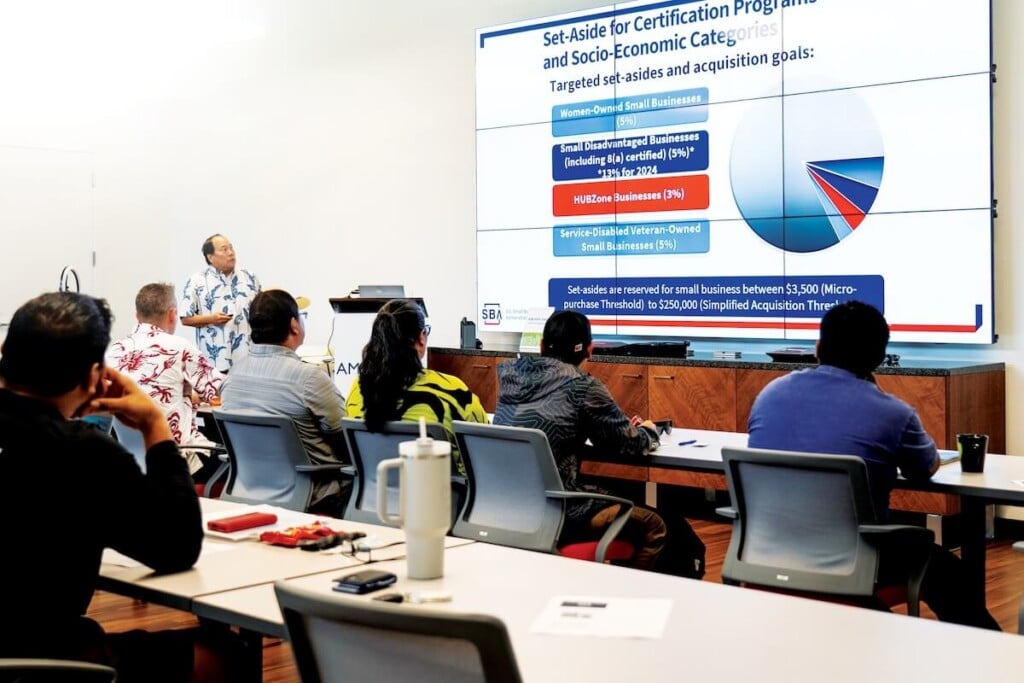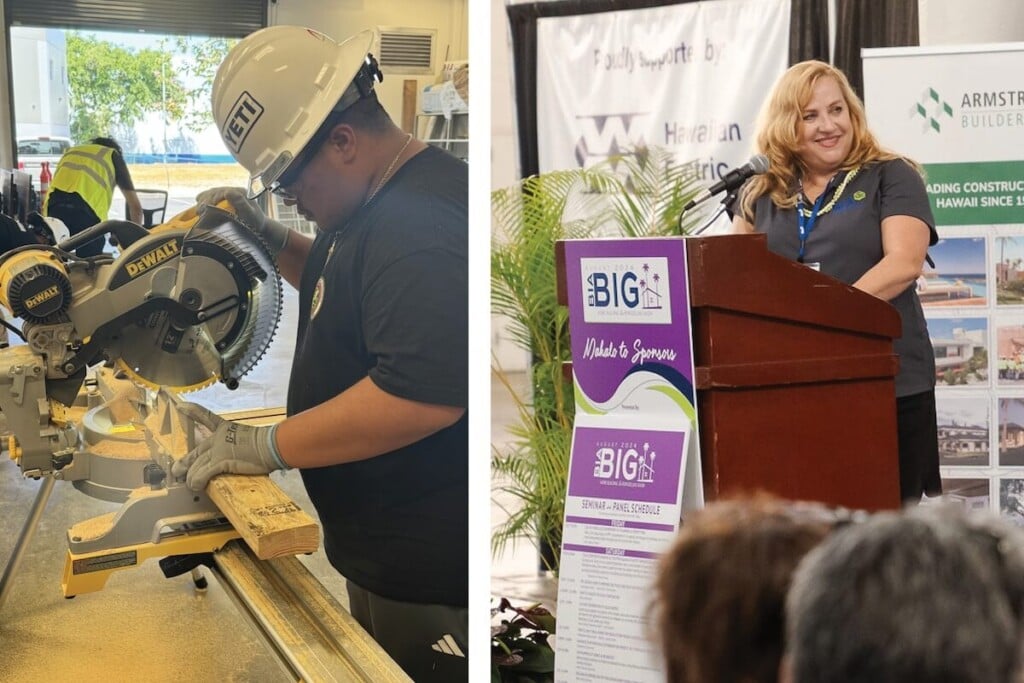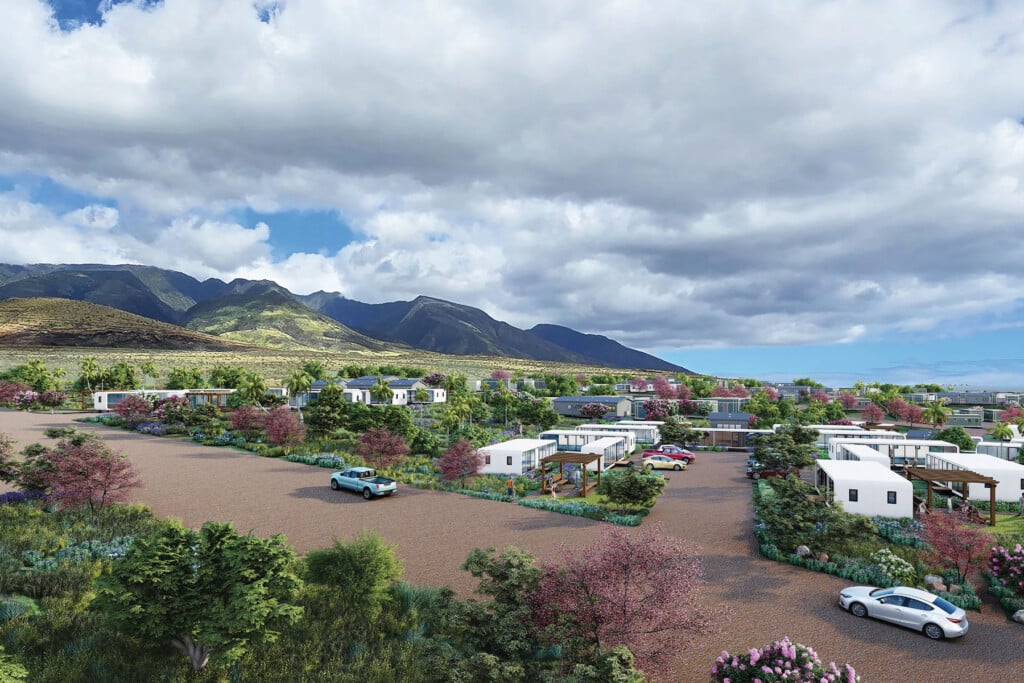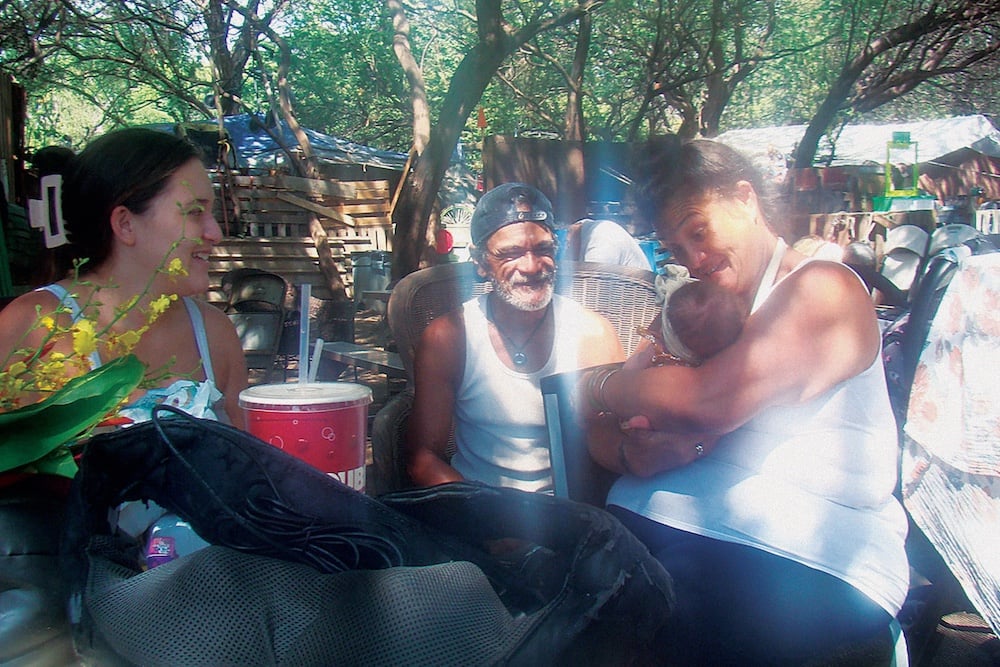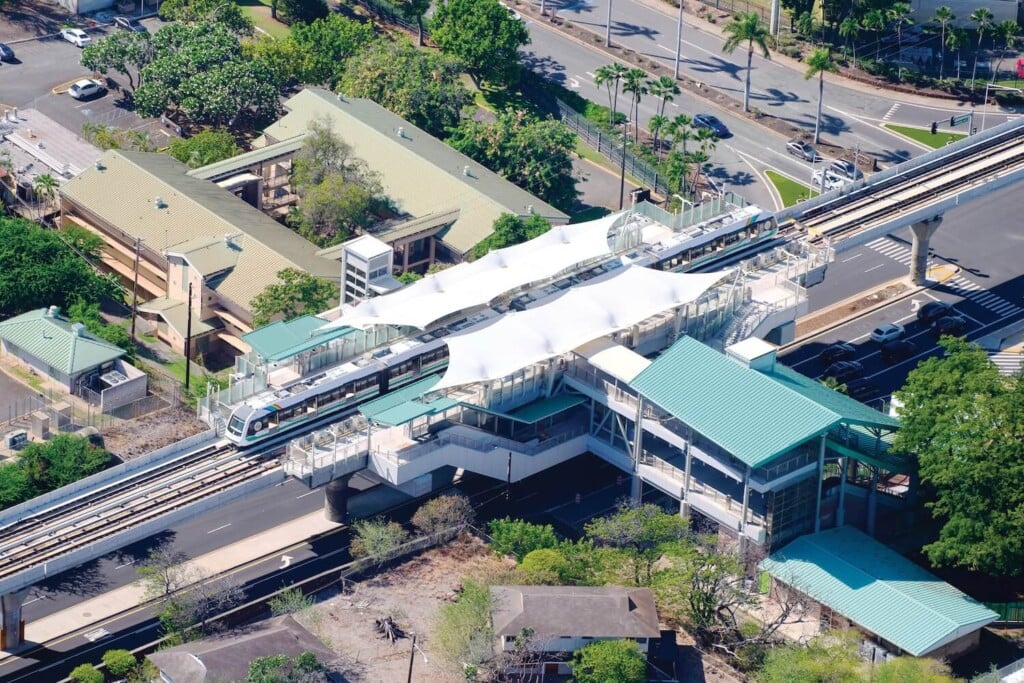Storm Warning
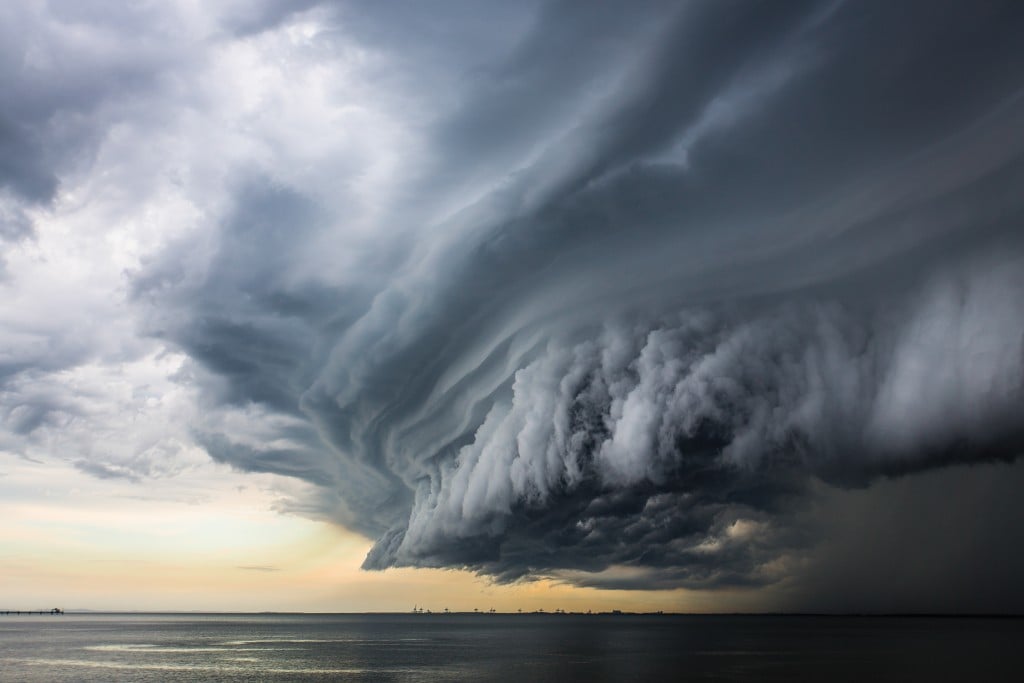
Hawaii’s current building code does not require construction that could withstand a storm as powerful as Hurricane Iniki. In fact, some new local homes are built under the assumption that wind gusts won’t exceed 100 mph – much less than Iniki’s gusts of up to 175 mph. Even more worrisome is that many homes constructed under older codes are even less wind resistant.
Almost everyone living in Hawaii in 1992 can still remember the devastation left by Iniki, which came ashore on Kauai as a Category 4 hurricane. It took more than a decade for the Garden Island to fully recover.
That’s why it’s troubling that Hawaii’s building code only requires new structures to be built to withstand a Category 3 hurricane. Most Mainland states base their codes on a more recent and stricter version of the International Building Code, including many states that have not been hit by any hurricanes in modern times.
One day last summer, Hawaii had three “Category 4 hurricanes in our neighborhood,” says Gaur Johnson, assistant professor of structural engineering at UH Manoa. Knowing that “our building code is intended to design for a Category 3 storm, I was extremely worried.”
The state of Hawaii bases its building code on the 2006 version of the International Building Code, while most states use the 2012 IBC.
The state’s Building Code Council is moving toward adopting the 2012 IBC, but it’s not clear when those rules will take effect. Even with the proposed new rules, buildings only need to be built to resist 3-second gusts of 130 mph, which means a Category 3 hurricane.
Gary Chock, president of Martin & Chock, a structural engineering firm, says that one problem is that ambiguous language in Hawaii’s current code fails to fully communicate some requirements, potentially putting buildings and their occupants at greater risk. Even worse, many Hawaii homes were built under even older, less stringent codes. Older commercial buildings, schools and other structures were built to higher standards than homes, yet might still fail to meet more modern standards.
Light-frame homes are especially at risk, Chock says. A complete load path of connectors – a method for connecting the structural framing, from the roof to the foundation, so it will hold when wind hits – and the use of hurricane clips weren’t mandated under the building code until the state had seen the results of hurricanes Iwa in 1982 and Iniki in 1992. Iniki had sustained winds of 140 miles per hour when it hit Kauai, with gusts as high as 175 mph. The Hawaii code is designed to withstand 3-second gusts of up to 130 mph.
“A storm like Iniki or any Category 4 storm, if it had a direct hit on Oahu, the economy of the state would be ravaged,” Johnson says. “That keeps me up at night. Even though people may perceive these requirements as expensive, the reality is even if we were meeting those standards since this last code was applied (in 2010), and we applied it perfectly, it’s really only new homes that are being designed by these requirements. So the older homes … have a higher likelihood of being destroyed and it will still be catastrophic.”
The solution, he says, is to incorporate the newer requirements gradually, “so that, over time, our community as a whole becomes more resilient.”
Construction companies and contractors are required to meet the minimums of the building code, but can exceed them, and some projects do. However, Chock says most don’t upgrade their buildings to a higher level of hurricane resistance because developers and building owners typically want a structure that meets the code, though some buildings are inherently stronger because of the structure and the materials used.
Nonetheless, if a Category 4 hurricane hit, Hawaii would suffer widespread damage. However, Chock says, engineers do not expect properly designed buildings constructed under the current code to fail. But he can’t say the same thing about single-family homes built under older or more relaxed codes and pre-engineered metal buildings, such as warehouses.
How Strong Are Hawaii’s Buildings?
A state agency called the Hawaii Building Code Council, composed of experts from the building industry, has the authority to adopt a building code or codes statewide, plus codes for mechanical, sewage and other building rules. The state codes apply to each county unless a county approves an amended code.
The current Hawaii building code was adopted in 2010 and designed to resist winds consistent with a Category 3 hurricane – three-second gusts of about 130 mph. Engineers calculate that number by applying a load factor to a basic wind speed of 105 mph, says Chock. “When you take the 105 and you do algebra to figure out what the actual wind speed, the actual structural integrity intended, the number is actually 130,” he says.
This algebra takes into consideration the topography, exposure class and occupancy category of the building. Engineers also need to consider if air flows into the building, and the code’s enclosure classifications: open, enclosed and partially enclosed. Simply put, if air can flow in, it’ll cause the building to swell with internal pressure. A majority of Hawaii’s buildings are designed for partially enclosed classifications, according to Bill Brizee of Architects Hawaii Ltd., Ken Hayashida of KAI Hawaii and Jonathan Kam of Moss & Associates – a group that is working on a design-build project proposal for UH-Manoa.
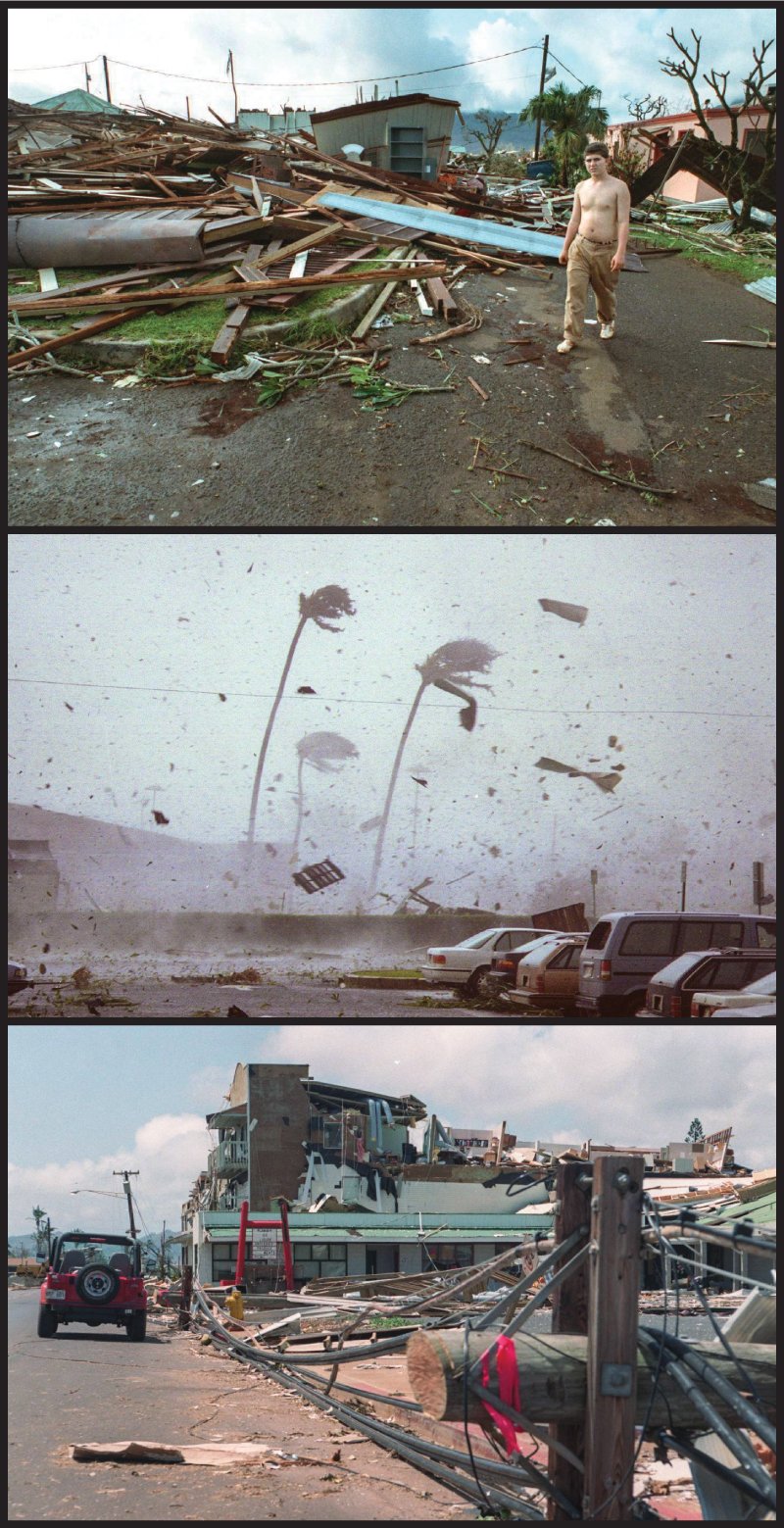
HURRICANE INIKI:
The category 4 hurricane devastated Kauai in September 1992 with sustained winds of 140 mph and three-second gusts of as much as 175 mph. However, Hawaii’s building code requires only that new structures be built to resist three-second gusts of up to 130 mph. Some architects and builders create local buildings that exceed the requirements of the building code.
Photos courtesy: Honolulu Star-Advertiser
According to the group, Hawaii doesn’t have to worry as much about its commercial buildings because they use partially enclosed designs and because they are often made from concrete, making them heavy. However, what makes these buildings resistant to hurricanes will depend on the specific structure.
Wind speed and associated air pressure are not the only concerns during a hurricane; there’s also wind-borne debris.
Things like roof shingles, shipping pallets and tree parts can fly at high speeds as high as 60 feet up. If a window breaks, the structure will be subject to great internal pressure, which Johnson compares to inflating a balloon that can pop. Water can also enter and cause damage.
The International Building Code mandates that all buildings in wind-borne-debris regions must be built to resist debris impact. However, concerns about affordability led to the local amendments making this rule optional in all four counties: For residential buildings, you either need to have this window protection or you need to design the structure for a partially enclosed condition, which means it’ll be subject to high internal pressure, and have a room where residents can safely wait out the storm.
Johnson says the code, as amended locally, does not effectively communicate this. A possible misinterpretation of the code could leave homeowners with a situation where “you’re not protecting your opening, you’re designing for a low internal pressure, so your roof is more likely to blow off, and, when that happens, you don’t even have a safe room to evacuate in. And that’s like the worst possible interpretation,” he says.
Most commercial buildings must have glazing on their windows to a certain height, and they employ different methods to protect from hurricane uplift. Brizee says a building made from wood will require hurricane clips and hold downs, among other devices, whereas concrete and steel structures incorporate different measures that accomplish the same thing. Examples include thicker concrete and steel reinforcement requirements in concrete buildings, and larger steel members in steel buildings. Concrete is generally the most common type of construction used and, because such buildings are heavier, they remain stiffer in strong winds. However, steel buildings are also strong, though more flexible than concrete, and should perform well in strong winds, Brizee and his colleagues say.
New Code Coming
The locally adopted International Building Code of 2006 can apply to both residential and commercial buildings; however, the state also adopted the 2006 International Residential Code, which was originally designed to be used in regions not prone to hurricanes. Johnson says one benefit of this code is that a structural engineer is not needed – architects and contractors can select, say, the spacing between floor joists from a table of options prepared by structural engineers.
Johnson compares this code to a cook book: “If you’re making bread, you need flour, water, yeast, put it together and cook it for a while, that’s fine. And so you can just look up what you need, put things together and you have yourself some bread. … There are a lot of steps you can do. Maybe you can change the type of flour, make it more appropriate for a bagel versus some other thing you’re making. So there’s more flexibility.”
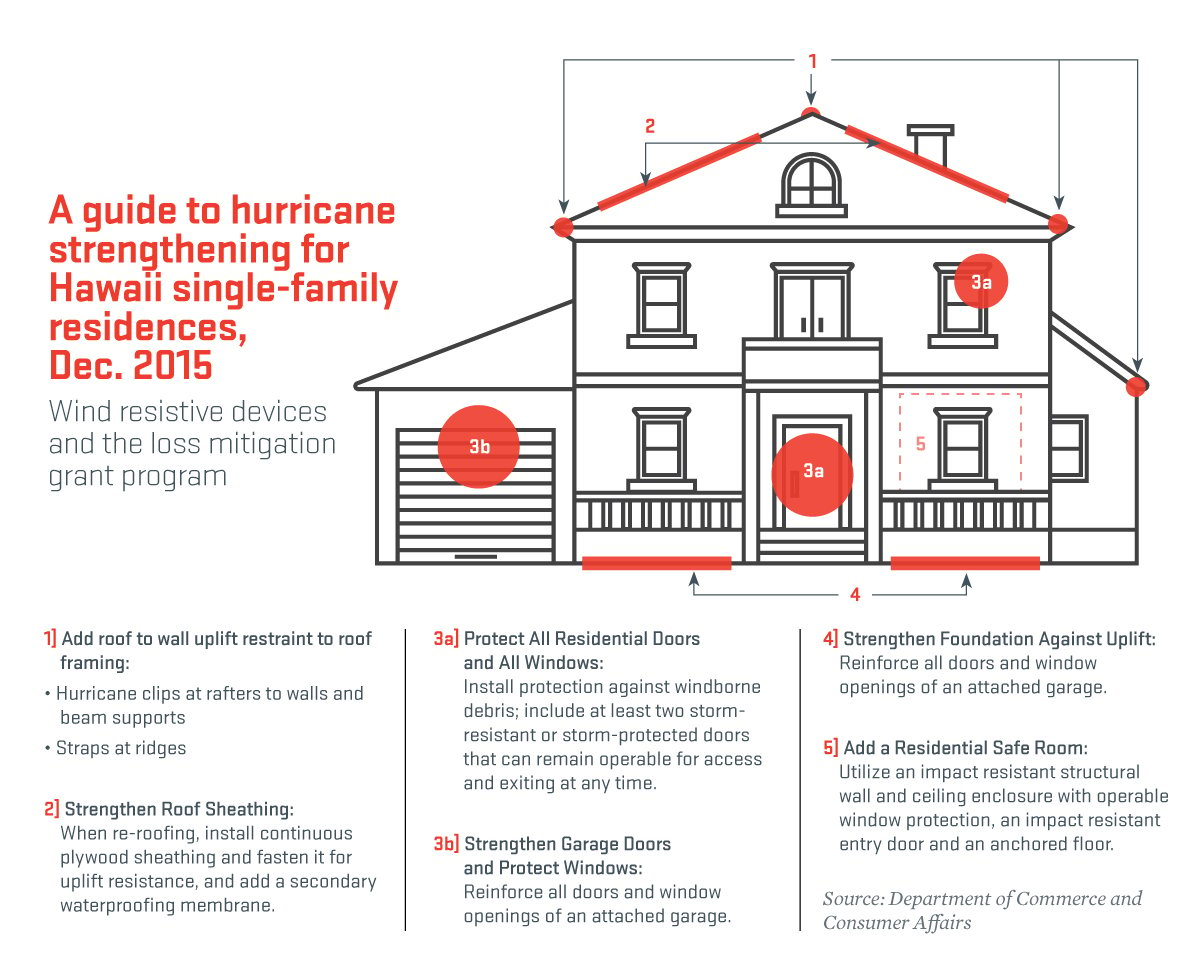
Under local amendments to the 2006 International Residential Code, single-family homes are built under the assumption that wind gusts won’t exceed 100 mph, a low Category 2 hurricane.
Residential structures built before these codes may fare even more poorly in a hurricane. Retired UH meteorology professor Gary Barnes says, “Single-wall construction is cheap but weak, single-pane windows are not sturdy and gently sloped roofs are more susceptible to lifting. Lanais will lift off and provide debris that crashes into and compromises structures. Houses sitting on a foundation of little concrete blocks (humorously called tofu construction) are easily blown off their foundations and completely destroyed.”
Allowances in old building codes permitted buildings that were less than fully engineered, Chock says. A fully engineered design is when engineers determine what the loads are in the members and connections of a building, and those members and connections are designed to properly accept and resist those forces. Needless to say, few homes in Hawaii meet those standards. According to the 2014 American Community Survey by the U.S. Census Bureau, an estimated 369,000 out of 525,000 housing units in Hawaii were built before 1990.
Preparing Older Structures
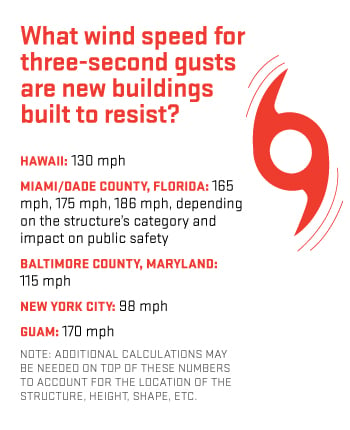 Hurricane damage is not covered by typical homeowner insurance policies. However, mortgage companies usually require homeowners to obtain hurricane coverage. For homeowners without mortgages, hurricane coverage is a choice about whether to protect their most significant investment, says Bobby Lee, executive VP for marketing and underwriting for Zephyr Insurance Co., which specializes in residential hurricane protection.
Hurricane damage is not covered by typical homeowner insurance policies. However, mortgage companies usually require homeowners to obtain hurricane coverage. For homeowners without mortgages, hurricane coverage is a choice about whether to protect their most significant investment, says Bobby Lee, executive VP for marketing and underwriting for Zephyr Insurance Co., which specializes in residential hurricane protection.
“Although Hawaii has not been hit with a major hurricane since 1992,” he says, “hurricane activity is still very unpredictable and could cause severe damage adversely impacting homeowner investments in their properties. More active hurricane seasons do serve as reminders of the potential loss (homeowners can suffer). They usually result in an increase in the purchase of hurricane policies.”
Chock says hurricanes can damage roofs, windows and the inside of the homes, with roofing usually going first. “That can lead to water damage,” he says, and damage from wind, air pressure and flying debris.
Hayashida, president of KAI Hawaii, says you need to be worried about more than your own home. If you live next to a house with single-wall construction, debris from that home could end up hitting yours.
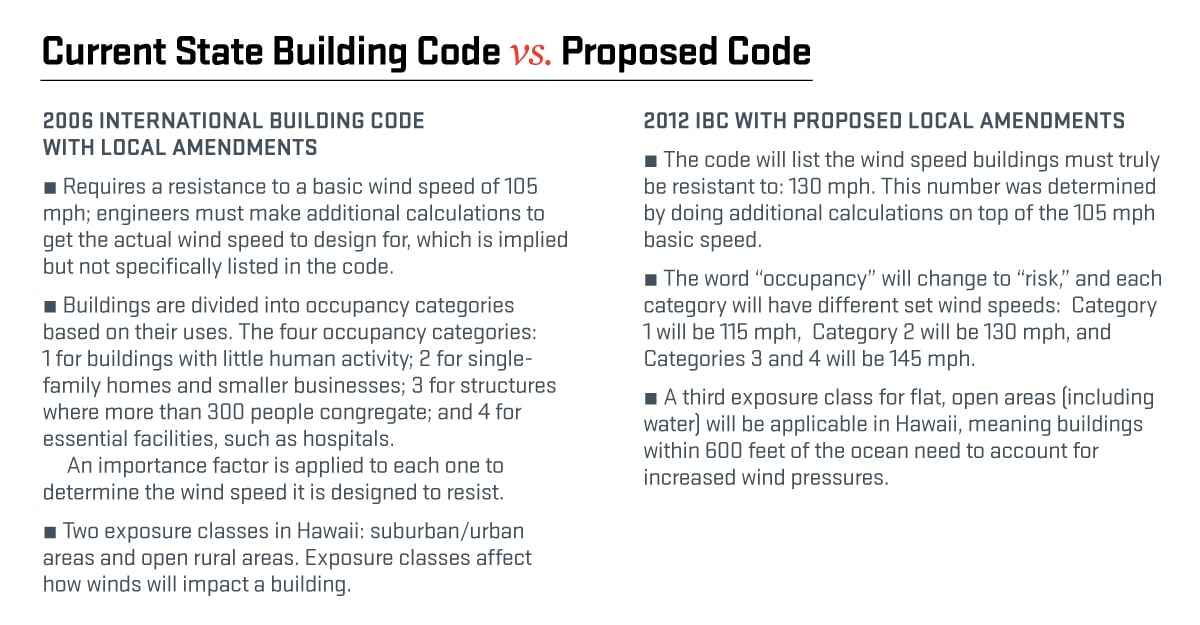
“Yes, my house is good, but my neighbors’ houses aren’t good and, if they fall down, their roof flies off, whatever happens, the debris ends up breaking all your windows. So that’s a big picture public policy issue that the codes and every one of us has to deal with.”
 In January, Martin & Chock and the state Department of Commerce and Consumer Affairs published a report on how homeowners can retrofit their single-family residences for hurricanes. The most vulnerable points include the roof and wall coverings (this is the most exterior barrier to the elements), openings and connections between the roof and walls, and the foundation’s connections to the rest of the house.
In January, Martin & Chock and the state Department of Commerce and Consumer Affairs published a report on how homeowners can retrofit their single-family residences for hurricanes. The most vulnerable points include the roof and wall coverings (this is the most exterior barrier to the elements), openings and connections between the roof and walls, and the foundation’s connections to the rest of the house.
“The very ironic thing about this is that the cost of the hurricane clips … is not very expensive at all,” Chock says. “It’s really a small added cost to provide a good level of hurricane resistance strength that could be comparable to what we’re doing for other types of buildings.”
From 2006 to 2008, the state ran a program that reimbursed homeowners up to 35 percent of the cost to retrofit their homes, up to $2,100. Approximately 430 homes received a subsidy for installing pre-approved wind resistive devices, such as hurricane clips, and strengthening foundations against uplift.
Improvements in the Next Code
The state Building Code Council has finished its local amendments to the 2012 International Building Code that will clarify the code’s language, so engineers and homeowners can more easily understand the requirements. However, there currently is no funding to push this code through the state’s administrative rule-making process to amend the Hawaii Revised Statutes that give it authority. The state Legislature needs to approve the funds. Johnson, who serves as chairman of the Building Code Council, says most of the counties have indicated they intend to adopt the 2012 International Building Code with the local amendments next year.
Because the state is far behind, Hayashida says, his firm uses elements from more modern codes, such as the 2012 or 2015 versions of the International Building Code, if the building owner and county permit offices approve. After all, the codes are minimum requirements, so contractors are allowed to use stronger and better designs, he says.
Johnson says changes to any building code are made because new problems are seen and addressed. “As soon as we fix one thing, the building becomes stronger, but it’s not actually the whole building – it’s just the one thing that broke. … Every time we have a major earthquake or tsunami or hurricane, engineers and researchers from all over the world will go to that place and investigate. ‘What was the common thing that failed?’ … We’re not making construction more expensive just because. We’re actually learning from the tragedy of others.”
What Are the Odds of Hawaii Getting Clobbered?
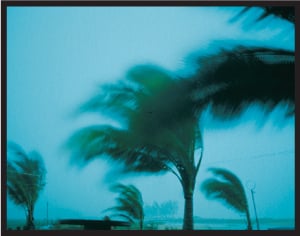 Mother Nature needs a warm ocean, deep clouds and other conditions to create a hurricane, says retired UH meteorology professor Gary Barnes. However, once it forms, a hurricane can remain powerful even if it crosses over cold water or is hit by strong winds, though those factors can weaken a storm.
Mother Nature needs a warm ocean, deep clouds and other conditions to create a hurricane, says retired UH meteorology professor Gary Barnes. However, once it forms, a hurricane can remain powerful even if it crosses over cold water or is hit by strong winds, though those factors can weaken a storm.
“Hawaii usually has warm enough water but drier mid-atmospheric conditions and strong wind shear (winds are blowing hard from the west-south-west or southwest). It is this wind condition – the subtropical jet stream – that is the chief protector of the Islands,” he says. He notes that Hawaii Island’s big mountains aren’t large enough to significantly alter the track of a storm.
“Since the wind shear is frequently strong over the Islands, I would guess the odds of Categories 3 and 4 are low, maybe once every 10 to 20 years within 250 miles of us, while the odds of a tropical storm to a Category 1 or 2 are every few years,” he says. “Unless the water gets 2-3 degrees Celsius warmer, the Category 5 would be difficult to maintain around Hawaii. If global warming continues, then a Category 5 could be possible in the future.”
